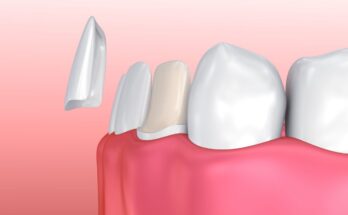Has your dental professional suggested having implants to replace a missing or loose tooth? But are you worried about how the process works? A dental implant can help replace a lost tooth as it is placed into your jawbone, working as an artificial tooth root. Research has demonstrated that dental implants in Knoxville have a 90-95% success rate over 10 years! But chances are there for a dental implant to fall in a few months or years after the placement. If you’re skeptical about the surgery and willing to know how long they last, keep reading to learn about dental implants, types, longevity, etc.
Structure of Dental Implants and How Long Do They Last?
A dental implant consists of the crown, abutment, and screw, where the screw part of the implant is referred to post. The dental surgeons screw the post into the jawbone, and the abutment is linked to the screw and retains the crown in place. Our teeth help us chew food, speak, express ourselves, and revamp our appearance daily. As no medical devices are built for the lifetime, several ways are available to make your dental implants last longer, which are shown below:
- Floss and brush daily and thoroughly.
- Put on a mouthguard if you have bruxism.
- Avoid biting hard candy or nails, and stop using your teeth to open packets.
- Have daily dental cleanings and inspections.
- Have a healthy lifestyle and never smoke.
Types of Dental Implants
-
Subperiosteal Implants
They are placed beneath the gums and above the jawbone, and they consist of a metal framework with tiny extensions that protrude a bit from the gums. These dental implants are usually suggested for patients with inadequate healthy jawbone for endosteal implant placement and can’t undergo an extra process, such as bone grafting, before implant placement.
-
Endosteal Implants
These are prevalent types of implants looking akin to tiny screws and are made from titanium or ceramic. Endosteal implants are directly inserted into your jawbone using a two-step procedure. Local anesthesia will be given to numb the area, and the surgeon will cut your gums. Then, they will drill into your jawbone to build a space for the implant. Once the placement is done, your gums and jawbone can heal. During a follow-up visit, a crown is usually fixed to the implant using a metal post named an abutment.

Factors Affecting Whether A Dental Implant Will Fail
-
Inadequate Care and Maintenance
Oral hygiene is vital for dental implants and your real teeth. Plaque and tartar accumulation often lead to gum disease, which may injure your jawbone and gums. It’s known as peri-implant disease when such accumulation affects the area surrounding an implant. The previous stage of the per-implant disease is reversible, which may cause peri-implantitis if left untreated. Due to this, practicing top-notch oral hygiene is essential when you have an implant, which includes:
- Flossing regularly.
- Brushing twice a day.
- Visiting your dental professional periodically.
- Smoking
Dental implants have a minimal success rate if you’re a smoker. Research has shown that overall dental implant failure rates are 11% among smokers and 5% for non-smokers. Smoking is injurious to dental implant’s sustainability since it can interfere with blood flow to the affected region, adversely affecting osteointegration and the healing procedure.
Conclusion
Considering dental implant’s success rate, visiting an experienced and trained restorative dental professional for optimum dental care is essential. Therefore, it’s crucial to maintain follow-up visits, abide by post-care guidelines, and maintain dental hygiene at home. However, a failed implant can often be replaced, and a few treatment options are available if required. Don’t forget to talk to your dentist or dental surgeon if you have indications of implant failure.




